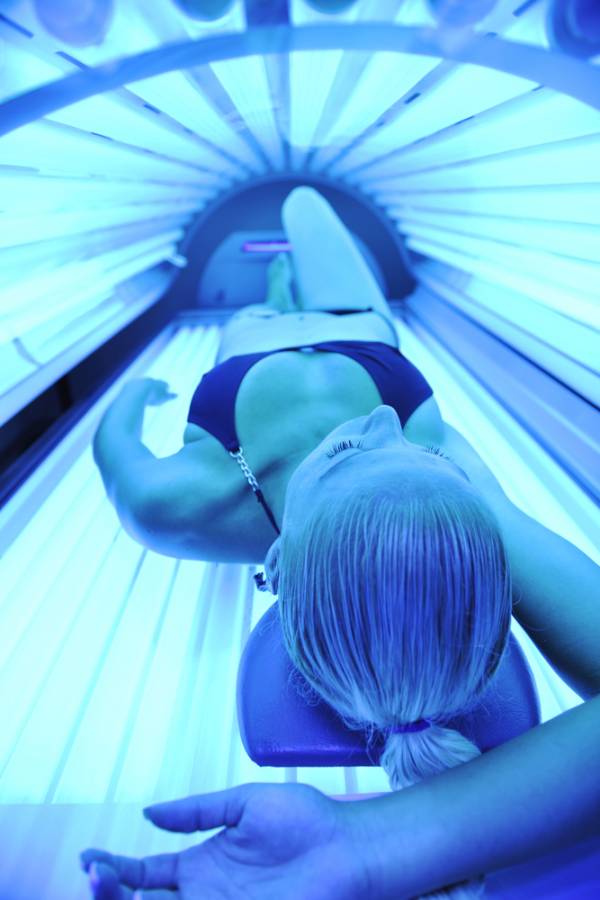Vitamin D deficiencies have been linked to some pretty scary things, like colon and prostate cancer and cardiovascular disease. Almost every cell in our body has a vitamin D receptor, and all those receptors are there for a reason. Most of us know that we need vitamin D to form and maintain strong bones, but that’s not all vitamin D is good for. Deficiencies have been linked to daytime sleepiness, depression, autoimmune disease, insulin resistance, complications during pregnancy, muscle and joint pain, obesity, and problems with the thyroid to name a few. To top it all off, it’s been found that low vitamin D levels increases your risk of death by 26%. Wow.
Now, let’s think about what time of year it is. For those of us in the Northern Hemisphere, it’s the beginning of spring. Most of us have probably not been working on our tans too much during the winter months, and unless we’ve been supplementing with daily, sufficient doses of vitamin D, our levels are lower than optimal. Of course, if you’re a reader of Pulse Beat Fit, you’re interested in maximizing your health and avoiding a 26% increase in death, but you’re also thinking about baring your body on the beach pretty soon. Knowing that low vitamin D can hinder fat loss and thyroid function, it might behoove you to learn how to make sure your levels are where they should be.
Checking Your Levels
First, what’s a good level of vitamin D anyway? That’s going to differ based on who you ask. Most traditional medicine sources believe levels between 35 and 70 ng/ml are good and enough to prevent disease. However, some alternative and progressive medical sources believe optimal levels are higher, somewhere between 50 and 70 ng/ml, and even as high as 70-100 ng/ml for those with heart disease or cancer. I’d say aiming for somewhere in the 50-70 mg/ml range unless you know you have some serious health problems or risk factors is a good idea. Then, I’d find a smart medical provider who knows his or her stuff about vitamin D and monitor your levels so you can hit that vitamin D sweet spot.
That brings up another good point. How do you measure your vitamin D levels? A blood test, ordered by your medical provider, can give you your level. Ask the practitioner to order a 25(OH)D level. Then, adjust your vitamin D dose as needed and recheck periodically to see how you’re doing.
How to Get Vitamin D
Now, how do you make sure you’re getting enough vitamin D? The best way to get vitamin D is from the sun, with sunbed use and oral vitamin D3 supplementation coming in second and third. What? Am I really telling you to go get a tan? Lay in the tanning bed? Yes, but some basic rules should be followed to avoid burns and damage to the skin.
The Sun
 So, let’s talk about natural sun exposure first and why it’s the best way to get your D. First, before there were vitamin-fortified foods and vitamin D supplements, there was the sun, the only real way for the human body to form vitamin D. It makes sense that this is the way our bodies were made and prefer to get our vitamin D. Rarely, if ever, is it better to supplement or work around the body’s natural processes. Also, when we’re exposed to UVB rays, our bodies make vitamin D3 sulfate. This is a water-soluble form of vitamin D3. The vitamin D3 available in supplement form is un-sulfated and is not water-soluble. It relies on LDL to carry it to receptors in the body, whereas sulfated vitamin D needs no carrier. Un-sulfated vitamin D may not provide the same benefits because of its lack in mobility and perhaps availability in the body.
So, let’s talk about natural sun exposure first and why it’s the best way to get your D. First, before there were vitamin-fortified foods and vitamin D supplements, there was the sun, the only real way for the human body to form vitamin D. It makes sense that this is the way our bodies were made and prefer to get our vitamin D. Rarely, if ever, is it better to supplement or work around the body’s natural processes. Also, when we’re exposed to UVB rays, our bodies make vitamin D3 sulfate. This is a water-soluble form of vitamin D3. The vitamin D3 available in supplement form is un-sulfated and is not water-soluble. It relies on LDL to carry it to receptors in the body, whereas sulfated vitamin D needs no carrier. Un-sulfated vitamin D may not provide the same benefits because of its lack in mobility and perhaps availability in the body.
So, if we want the best kind of vitamin D3 possible, we will make sure we get enough from sun exposure. You want to spend enough time outside with the majority of your body exposed (i.e. in a bathing suit or little clothing), until your skin is a very slight pink. The amount of time this takes will depend on your skin tone and sensitivity to the sun. The ideal time of day to absorb the most UVB rays is around noon. Also, don’t think you can just tan though a window or glass. It will block the UVB rays and you will only get UVA. Additionally, you can’t expect to expose a little of your face and arms and still raise your vitamin D level substantially either. That just isn’t enough skin surface. In fact, the skin on the face is more delicate so it still makes sense to protect this area when out in the sun.
Tanning Beds
 Now, regarding sun beds, you must be selective about the type of sunbed you choose. “Low pressure” beds are the better choice as they deliver more UVB lights when compared to “high pressure” beds, which deliver more UVA. UVA rays are those more strongly associated with photoaging, wrinkling, and cancers. Also, it is important to find a sunbed with electronic rather than magnetic ballasts. The magnetic ballasts are associated with electromagnetic field (EMF) exposure and excessive exposure to EMF has been linked to increased incidence in cancer. So, low pressure, electronic ballast sunbeds are good for vitamin D production, second to real sun exposure, but only if you don’t burn.
Now, regarding sun beds, you must be selective about the type of sunbed you choose. “Low pressure” beds are the better choice as they deliver more UVB lights when compared to “high pressure” beds, which deliver more UVA. UVA rays are those more strongly associated with photoaging, wrinkling, and cancers. Also, it is important to find a sunbed with electronic rather than magnetic ballasts. The magnetic ballasts are associated with electromagnetic field (EMF) exposure and excessive exposure to EMF has been linked to increased incidence in cancer. So, low pressure, electronic ballast sunbeds are good for vitamin D production, second to real sun exposure, but only if you don’t burn.
Oral Supplements
Lastly, there is oral supplementation with vitamin D. Now, I mentioned that your body makes vitamin D3. It makes sense to try to take something as similar to what your body naturally produces, so look for vitamin D3 when you go shopping. There are vitamin D2 supplements out there, but you don’t want that. Vitamin D2 is a vegetable-derived source and does not function in the body the same way. Vitamin D3 is absorbed about five hundred times faster, is 87% more effective in raising vitamin D levels, has a longer shelf life, and is more bioavailable.
As for doses of vitamin D, the sources vary in their recommendations but anywhere between 4000-8000 IUs/day is probably what it will take to raise and maintain a healthy level. As I mentioned before, it is always a good idea to have your levels monitored to ensure they are in a good range. Doses may need to be adjusted based on your ability to absorb vitamin D, your size, and your exposure to the sun. Fix your vitamin D levels and enjoy looking, feeling, and performing better!
References:
1. H.A., Bischoff-Ferrari. Deptartment of Rheumatology, Institute of Physical Medicine, University Hospital Zurich, Zurich, Switzerland, “Optimal serum 25-hydroxyvitamin D levels for multiple health outcomes.” Last modified 2008. Accessed April 1, 2013.
2. G. Bjelakovic, et al., Vitamin D Supplementation for Prevention of Mortality in Adults, The Cochrane Database of Systematic Reviews, July 6, 2011: (7); CD007470, G.
3. Dr. John Cannell, Meta-analysis Looks at Efficacy of D2 vs D3, Vitamin D Council, November 16, 2011.
4. Robert P. Heaney, et al., Vitamin D3 Is More Potent Than Vitamin D2 in Humans, The Journal of Clinical Endocrinology and Metabolism, March 1, 2011: 96 (3); E447-E452.
Photos courtesy of Shutterstock.






